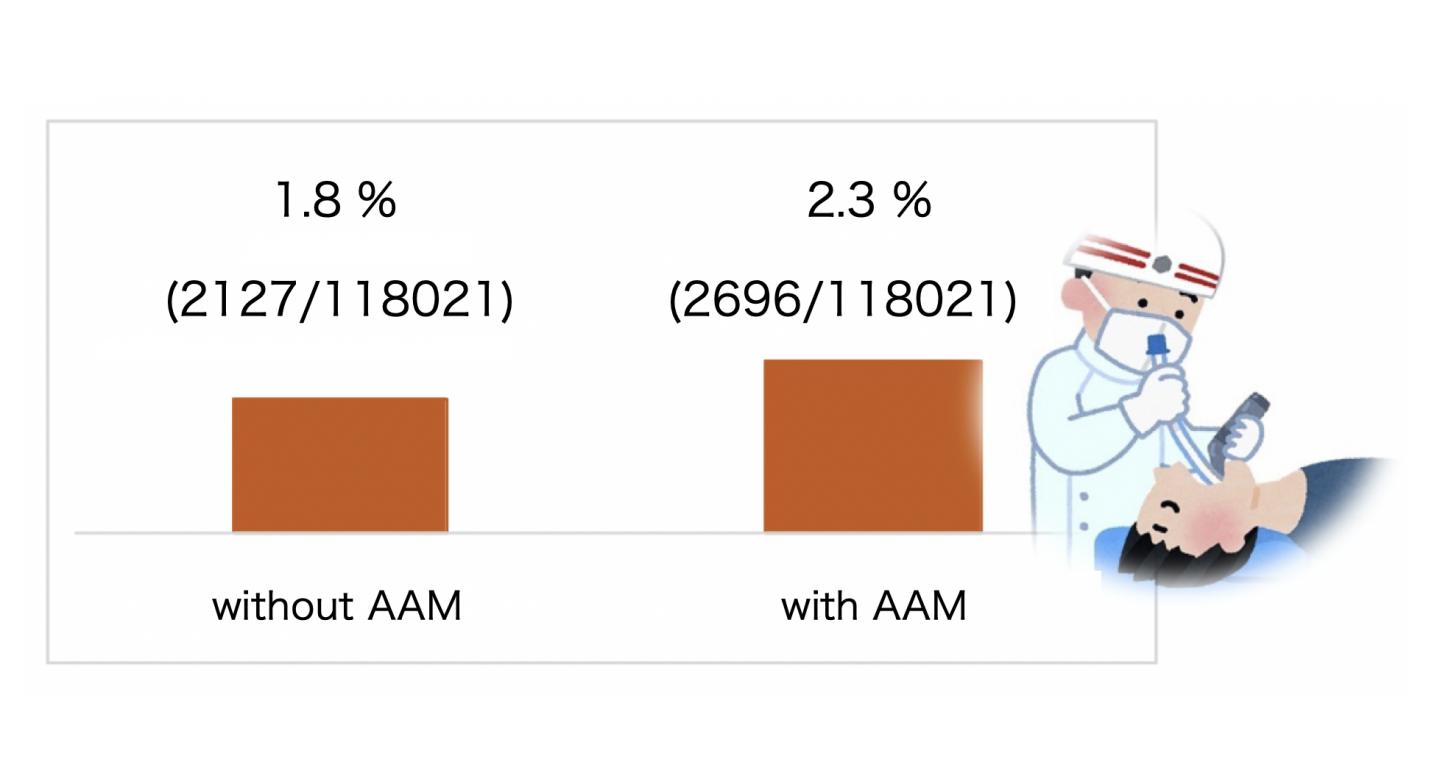Japan-based study involving Osaka University finds valuable correlation between use of advanced airway management and ECG rhythms indicating need/non-need for defibrillation during out-of-hospital cardiac arrest

Credit: Osaka University
Osaka – In cardiac arrest, the speed and type of treatment can literally mean life or death in the immediate term, but can also affect health outcomes after successful resuscitation.
During out-of-hospital cardiac arrest (OHCA), effective treatment starts with cardiopulmonary resuscitation (CPR) and, if necessary, electric shock by a defibrillator. In performing the process, emergency medical service (EMS) personnel also provide oxygen and ventilation either by the bag-valve-mask method or via more invasive advanced airway management (AAM) techniques, such as tube insertion, to keep the airway open. The ventilation methods have pros and cons in the immediate and longer term.
A team including researchers from Osaka University sought to identify patterns in the ventilation method and 1-month outcome after survival. To do so, they used data from more than 300,000 OHCA cases in the large-scale All-Japan Utstein Registry of the Fire and Disaster Management Agency (of Japan). Key in their work was tracing the correlation of electrocardiographic (ECG) rhythm and ventilation method, and the outcomes these combinations yielded. They reported their findings in The BMJ.
While AAM has been proven effective at protecting the airway during cardiac arrest treatment, many studies found it led to worse outcomes after survival. Its use compared with bag-valve-mask is controversial. The researchers sought to shed light on the debate.
“We noted that outcomes differed based on patients’ first-documented ECG rhythm,” says study co-author Sho Komukai. “We found shockable patients did not have improved 1-month outcomes after AAM. However, non-shockable patients treated with AAM showed better outcomes.”
A shockable rhythm indicates receptivity to defibrillation, while a non-shockable rhythm is treated with only CPR, often accompanied by intravenous adrenaline. Favorable outcomes include recovering the neurological functioning and early hospital discharge, whereas unfavorable outcomes include function loss and death.
The findings were made possible by the researchers’ use of an advanced statistical technique called time-dependent propensity-score sequential-matching analysis. This method accounts for the timing of AAM administration, and offsets bias from patients undergoing longer resuscitation and receiving more interventions. The result was a more accurate portrait of AAM’s outcomes, and the positive connection with AAM in non-shockable patients.
“International guidelines do account for treatment based on ECG rhythms, yet we found that different airway management strategies based on these rhythms deserve greater attention,” explains principal investigator Tetsuhisa Kitamura. “Shockable rhythm should receive immediate defibrillation and continuous chest-compression, rather than ventilatory support. However, non-shockable rhythm could benefit from oxygen delivery with AAM.”
###
The article, “Prehospital Advanced Airway Management for Adult Patients with Out-of-Hospital Cardiac Arrest: A Nationwide Cohort Study,” was published in The BMJ at DOI: https:/
About Osaka University
Osaka University was founded in 1931 as one of the seven imperial universities of Japan and now has expanded to one of Japan’s leading comprehensive universities. The University has now embarked on open research revolution from a position as Japan’s most innovative university and among the most innovative institutions in the world according to the Nature Index Innovation 2017. The university’s ability to innovate from the stage of fundamental research through the creation of useful technology with economic impact stems from its broad disciplinary spectrum.
Website: https:/
Media Contact
Saori Obayashi
[email protected]
Original Source
https:/
Related Journal Article
http://dx.




